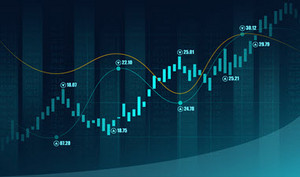Turbulence on the Canadian stock markets
The stock markets are swinging up and down unpredictably. What can we learn from this volatility? What was the average decline during past bear markets and what happened afterwards?

The risk of investing in the stock market can easily be underestimated, especially during a prolonged upward cycle. Financial crises are reminders that even the most financially sound businesses might see their share prices tumble.
However, having a diversified portfolio and staying true to your investor profile can help keep you from making hasty decisions and selling investments at the worst possible time.
Examining past bear markets and the subsequent recoveries can also help you avoid making costly mistakes. The following table lists the most recent bear markets and the time it took for prices to rally to their previous highs.
Recent bear markets with declines of more than 20% in the S&P/TSX Composite Index
| EVENT | BEAR MARKET PERIOD | DECLINE (FROM THE PREVIOUS HIGH TO THE BOTTOM) | TIME TO RETURN TO THE PREVIOUS HIGH | PERFORMANCE IN THE YEAR AFTER HITTING THE BOTTOM | PERFORMANCE DURING THE STOCK MARKET RECOVERY |
|---|---|---|---|---|---|
| Vietnam War | 05/1969 - 05/1970 | -29% | 2 years | 25% | 68% over 3 years (16%/year) |
| Oil Embargo | 10/1973 - 12/1974 | -37% | 4 years | 14% | 182% over 6 years (19%/year) |
| 2nd oil shock and the fight against inflation | 11/1980 - 07/1982 | -44% | 1 year | 84% | 205% over 5 years (24%/year) |
| Black Monday October 1987 crash | 08/1987 - 10/1987 | -31% | 2 years* | 20% | 42% over 2 years (18%/year) |
| Recession and the Gulf War | 10/1989 - 10/1990 | -25% | 3 years | 14% | 150% over 8 years (13%/year) |
| Failure of the LTCM hedge fund and the emerging markets crisis | 04/1998 - 10/1998 | -32 % | 1 year | 32% | 113% over 2 years (49%/year) |
| Dot-com bubble | 09/2000 - 10/2002 | -50% | 3 years | 33% | 165 % over 6 years (19 %/year) |
| Housing bubble and financial crisis | 06/2008 - 03/2009 | -50% | 5 years | 58% | 89 % over 2 years (36 %/year) |
| Sovereign debt crisis (euro area) | 04/2011 - 10/2011 | -22% | 2 years | 11% | 40% over 3 years (12 %/year) |
| Oil price plunge | 09/2014 - 01/2016 | -24% | 1 year | 30% | 50% over 4 years (11%/year) |
| Public health crisis (COVID-19) | 02/2020 – 03/2020 | -38% | 1 year | 68% | n/a |
| Average | -35% | 2.3 years | 35% | 117% over 4 years (21%/year) |
Assumptions: DividendsDividends are the portion of the earnings, after taxes, that a corporation distributes to shareholders in proportion to their holdings. paid were not taken into account. The “event” column is a simplification of actual events. Daily data were used. Source of data used to prepare the table: Thomson Reuters.
* Exceptionally, the time indicated is two years despite the fact that, at that point, the index had fallen again during the subsequent crisis without having reached the previous high. The index would have returned to its high after two years if dividends had been taken into account.
Conclusion
A stock market crisis can be a stressful event. However, if the past is any indication, investors who keep calm and ride out the downturn instead of panicking and selling at what would be the worst time tend to be rewarded during the following upturns.
